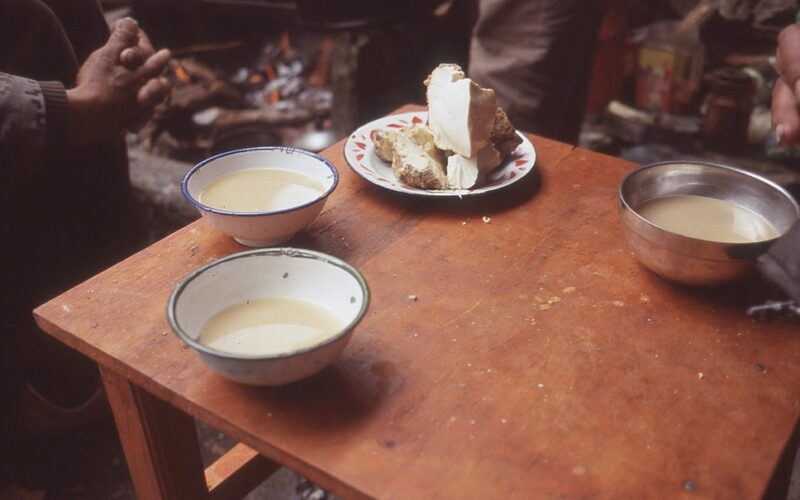What the Chinese can learn from Tibetans about hypertension

by Michael Woodhead
I’ve always wondered why Tibetans could be so healthy when they seem to subsist on a diet composed of dairy and meat, perhaps with the odd potato thrown on the fire.
One of the staples of the Tibetan diet is tsampa – the butter ‘tea’ which is more like a salty yak butter tea-milkshake. This is not your EasyWay shake – tsampa is made with barley and is often accompanied by a glob of fermented yak milk sometimes known as kurut – similar to the products seen in Xinjiang.
Now it seems there is a hidden healthy component of Tibetan dairy products that has powerful antihypertensive properties, as strong as the drugs prescribed by western cardiologists. The blood pressure lowering effects come from the fermented milks produced by 259 Lactobacillus helveticus – a kind of probiotic ACE inhibitor if you like. Something in the Lactobacillus has potent effects on Angiotensin Converting Enzyme (ACE), the same system that is the target of modern antihypertensives such as enalapril.
In a recent study conducted by dairy technologists at the Inner Mongolia Agricultural University, Huhho, the fermented milk product was found to contain antihypertensive peptides that lower blood pressure by about 12 mmHg for six to 12 hours. That is fairly impressive BP lowering – and would be useful in a typical hypertensive patient with a systolic BP of 140/95mmHg who wanted to get to a target of 120mmHg.
As well as keeping Tibetans healthy, Dr Chen Yongfu and colleagues say the newly-identified probiotic/peptide may have potential as “a valuable resource for future development of functional foods for hypertension management.”
The Chinese midday nap causes high blood pressure
The common Chinese habit of having a midday nap – or wujiao (午觉)- is bad for blood pressure, researchers from Wuhan have shown.
In a study of blood pressure levels in more than 27,000 people, Dr Wang Youjie and colleagues from the School of Public Health, Tongji Medical College, Wuhan found that those taking daytime naps had significantly higher blood pressure than non-nappers. The risk of hypertension was directly related to the length of the midday nap, with those napping for more than 30 minutes being at significantly higher risk.
Writing in the Journal of Hypertension, Dr Wang said taking daytime naps could result in the elevation of evening cortisol levels, which may lead to high levels of blood pressure. The increased risk of hypertension in people who nap might also be related to sleep apnoea, the researchers suggested. They noted that midday napping is a also a risk factor for diabetes mellitus “We postulate that midday napping might increase the risk of diabetes and hypertension through the mediation of pathophysiological pathway(s) underlying metabolic syndrome, such as insulin resistance or increased inflammation,” they said.
Dr Wang noted that napping is a common habit in China, ingrained from childhood, and practised by 80% of Chinese college students, even though it is “more a habit than a physiological need”, according to a recent survey.
“Considering that midday napping is a common practice, these findings have important implications for further investigation of the potential health consequences of napping and of the optimum nap regimen for elderly people,” they conclude.








